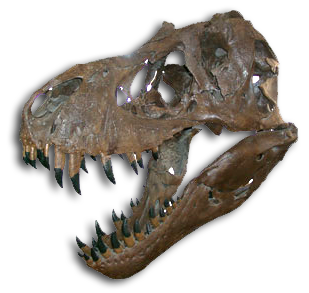Item Number
1235
Type
image
Description
Sequoia
Size
13x10
Age
Miocene
SciId
Family: Taxodiaceae
Status
in inventory
Display/Storage
Storage
Building
Zuhl Museum
Original Site
Oregon
Date Acquired
1978
Source
Roner
Gallery/Room\Floor
Storage Room
Notes
Cow Valley area, central Oregon. Notes from Dr. Scott Singleton, Houston Museum, 2005: Sequoia Family: Taxodiaceae central Oregon Formation: Age: Miocene or Pliocene Distinguishing Characteristics: Pronounced growth rings resulting from seasonal temperature variations in a temperate environment. The growth rings are more evident in sequoia (and its cousin, cypress) because of the abrupt change from very large cell size in the early wood (known as coarse texture) to very small cell size in the late wood. This phenomenon is termed uneven grain, and is more extreme in sequoia and cypress than in any other conifer, making this feature of critical importance in identifying these two genera. Because of this growth characteristic, sequoia makes a good candidate to slice longitudinally. The resulting plank reveals dramatic weaving lines as the cut intersects each growth ring, making this an interesting variation to the usual transverse (cross-section) cut.
Preview

Description
Cow Valley area, central Oregon. Notes from Dr. Scott Singleton, Houston Museum, 2005: Sequoia Family: Taxodiaceae central Oregon Formation: Age: Miocene or Pliocene Distinguishing Characteristics: Pronounced growth rings resulting from seasonal temperature variations in a temperate environment. The growth rings are more evident in sequoia (and its cousin, cypress) because of the abrupt change from very large cell size in the early wood (known as coarse texture) to very small cell size in the late wood. This phenomenon is termed uneven grain, and is more extreme in sequoia and cypress than in any other conifer, making this feature of critical importance in identifying these two genera. Because of this growth characteristic, sequoia makes a good candidate to slice longitudinally. The resulting plank reveals dramatic weaving lines as the cut intersects each growth ring, making this an interesting variation to the usual transverse (cross-section) cut. 12x9
Keywords
Sequoia Cow Valley area, central Oregon. Notes from Dr. Scott Singleton, Houston Museum, 2005: Sequoia Family: Taxodiaceae central Oregon Formation: Age: Miocene or Pliocene Distinguishing Characteristics: Pronounced growth rings resulting from seasonal temperature variations in a temperate environment. The growth rings are more evident in sequoia (and its cousin, cypress) because of the abrupt change from very large cell size in the early wood (known as coarse texture) to very small cell size in the late wood. This phenomenon is termed uneven grain, and is more extreme in sequoia and cypress than in any other conifer, making this feature of critical importance in identifying these two genera. Because of this growth characteristic, sequoia makes a good candidate to slice longitudinally. The resulting plank reveals dramatic weaving lines as the cut intersects each growth ring, making this an interesting variation to the usual transverse (cross-section) cut. 1978 Miocene Small Slab
Keywords
Sequoia Cow Valley area, central Oregon. Notes from Dr. Scott Singleton, Houston Museum, 2005: Sequoia Family: Taxodiaceae central Oregon Formation: Age: Miocene or Pliocene Distinguishing Characteristics: Pronounced growth rings resulting from seasonal temperature variations in a temperate environment. The growth rings are more evident in sequoia (and its cousin, cypress) because of the abrupt change from very large cell size in the early wood (known as coarse texture) to very small cell size in the late wood. This phenomenon is termed uneven grain, and is more extreme in sequoia and cypress than in any other conifer, making this feature of critical importance in identifying these two genera. Because of this growth characteristic, sequoia makes a good candidate to slice longitudinally. The resulting plank reveals dramatic weaving lines as the cut intersects each growth ring, making this an interesting variation to the usual transverse (cross-section) cut. 1978 Miocene Small Slab


